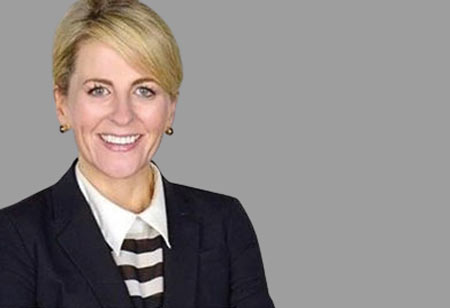

Thank you for Subscribing to Insurance Business Review Weekly Brief

Taffy Jo Mayers is a dynamic and seasoned insurance executive and community leader, who brings a customer-centric and innovative approach to both leadership and team development. With a passion for cultivating world-class teams, Mayers has consistently reshaped and optimized contributions, leveraging opportunities for growth across diverse industries. Proficient in P&L management, marketing, business development, underwriting, and operations, she offers profound expertise across Middle Market, Construction, Inland and Ocean Marine, and Large Property sectors. A true advocate for talent development, Mayers is dedicated to identifying and nurturing potential, employing a steadfast commitment to coaching, mentoring, and cultivating cultures of high engagement and lasting retention. In an exclusive interview with Insurance Business Review, Mayers shares her valuable insights on the challenges, trends and best practices in strategic Insurance BR space.
What are some of the roles and responsibilities that you have today at WTW? I embraced the field of consulting subsequent to a tenure marked by diverse engagements in underwriting, operations, sales, distribution, and strategic domains. My concentration gravitated toward the commercial sector, with particular emphasis on the lower end of the middle market. This transition necessitated strategic optimization encompassing the enhancement of customer propositions, refinement of distribution strategies, and the redefinition of the underwriter's role. Realizing that Insure Techs could work well alongside traditional methods prompted my shift from traditional underwriting to a more customer-focused approach. Partnering with EY (Ernst and Young) was pivotal for my growth as I focused on building trust with brokers and clients to enhance satisfaction. Invited by EY, I joined consulting, focusing on insurance and technology. I transformed products, pricing, and distribution using claims data, managing global regional variations in the value chain and insurance buying. Could you elaborate on emerging trends or factors that have gained significance on the global stage? Understanding varying data optimization and utilization levels, third-party data availability, and technology adoption is crucial. In Europe, the focus is on nuanced wordings and traditional underwriting, which aligns with my early career involvement, while in the US, the emphasis is placed on standardized wordings, claims experience, and pricing discussions. Technology must address these differences while also acknowledging the importance of contract language in insurance coverage. The pandemic highlighted differences in how business interruption is managed in Europe and North America. While the basics remain consistent, variations in stakeholder roles such as brokers, actuaries, underwriters, and customers affect the equilibrium, alongside differences in customer experience, self-service, and claims management dynamics. Significantly, North America possesses a strong middle markets sector, attributed to its larger economy, leading to elevated premium levels. Collaborative efforts thrive notably in transactions, particularly within global and specialty lines, concentrated in the London market, showcasing a specialized proficiency in serving specific accounts in both Bermuda and London, fostering a distinctive operational milieu. What advice would you offer to someone who is undergoing or contemplating a similar transition that you have experienced? Nurturing an atmosphere of receptiveness and inquisitiveness becomes vital in comprehending the dynamic nature, inherent fluctuations, and the particular risk environment of an insurance industry. The acknowledgment of each entity's distinctive culture, encompassing clients, professional paths, and brokerages, remains pivotal. Adapting strategies to an organization's specific objectives holds utmost significance, whether it involves redefining portfolios, fostering product innovation, or elevating customer interactions through a synergy of human resources, procedures, and technology. T he journey towards industry rejuvenation rests upon a dual framework - the profound recognition of data's significance and the orchestration of technological progress with the guiding principles of cultural transformation and strategic alignment. To embrace the pivotal role of these factors is to pave the way for comprehensive achievement, propelling industries towards a future of continuous innovation and prosperity.I agree We use cookies on this website to enhance your user experience. By clicking any link on this page you are giving your consent for us to set cookies. More info